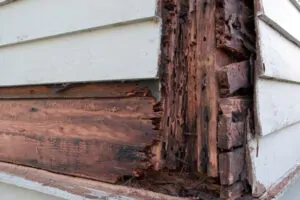Any siding replacement project will necessitate meticulous preparation. One of the essential steps to consider is when to do the replacement. Extreme temperatures can be highly damaging to your roof, lowering the quality of your installation. In this article, we will find out the most acceptable time of year to have your siding replaced.
Siding Replacement During Fall
Autumn is devoid of rain showers, freezing temperatures, and excessive heat. These weather conditions may pose difficulties for your siding installers, causing your job to be delayed. Because these things are less likely to cause you problems during the fall season, you may be more confident that the installation will be completed successfully.
During this time of year, you may also find reasonable prices from roofing companies in Idaho. Because most people prefer to rebuild their houses in the Spring, the business usually is slow during these months. As a result, siding contractors may offer discounted pricing for their services in the fall to increase business.

Signs That Old Siding Needs To Be Replaced

our siding is already severely damaged. Siding replacement, like roof or gutter replacement, should be done immediately, especially if the problem risks other components of your property. Here are a few indications that your siding needs to be changed as soon as possible:
Rot
Wood siding is prone to rot because it absorbs moisture, increasing the risk of moisture buildup. The existence of rot can alter the appearance of your siding, so it eventually lowers the value of your home. Rot can make your siding less efficient in protecting your property against the weather and causing visual harm.

Fungus Growth

Any growth on your sidings, such as fungus, mold, and green growth, can be a severe problem. This could indicate that water has become trapped in the siding or has infiltrated and saturated the partitions.
Cracks
Water will find its way into your siding’s underlayment through cracks. Replace the problematic panels as soon as possible to prevent further damage. If the fractures are limited to a few locations of your siding, you can choose for a partial replacement, having only the damaged panels replaced. However, if the crack is already extensive and spreads throughout your home, you should consider replacing your entire siding.

Blisters

Blisters develop when the siding is exposed to too much heat or moisture. As soon as you find these flaws, contact a siding contractor who can help you determine the source of the problem and replace the damaged components.
Hail Damage
Hail damage can cause chipping, cracking, and denting. After a hailstorm, if you notice any of these on your siding, call your trusted siding company to evaluate the damage and replace it. You could also check your house insurance policy and contact your insurance carrier to see whether it would cover the expense of replacing your siding.

Why Should You Replace Your Siding?

Modern siding materials are lasting longer and longer, so replacing a home’s exterior covering is occasionally based solely on current trends and patterns. Colors that were fashionable ten years ago may now appear old-fashioned. If your home appears older and worn than it should, it may be time to replace the outdated siding with something more modern.
Are you searching for a roofing or siding professional to help you with your home improvement project? Call us at Roofing Nampa ID or fill out our online form to schedule an appointment. We’re happy to work with the residents of Nampa and the surrounding towns. Our team is looking forward to working with you.





